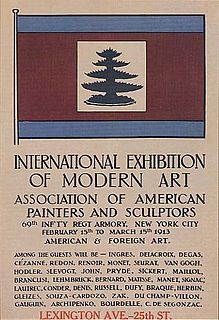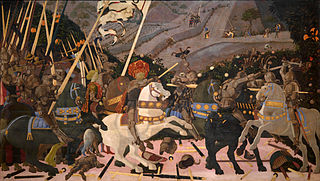 W
WThis is a partial list of 20th-century women artists, sorted alphabetically by decade of birth.
 W
WThis is a list of finalists for the 1946 Archibald Prize for portraiture. As the images are copyright, an external link to an image has been listed where available.
 W
WThis is a list of finalists for the 2006 Archibald Prize for portraiture.Catherine Abel – Portrait of Julia Leigh John Beard – Ken Unsworth Danelle Bergstrom – Back to front – Kevin Connor Kate Beynon – Year of the dog self-portrait Tom Carment – Professor Muecke, portrait of Stephen Muecke Jun Chen – Joe Furlonger Peter Churcher – Bruce, Linde and me on the road to Guadelupe Adam Cullen – Edmund, portrait of Edmund Capon Geoffrey Dyer – The Abstractionist Graham Fransella McLean Edwards – Cate Blanchett and family Prudence Flint – Four wheel drive #2, self-portrait Robert Hannaford – Tim Flannery Nicholas Harding – Robert Drewe 2006 Weaver Jack – Weaver Jack in Lungarung, self-portrait Paul Jackson – Garry McDonald "All the world's a stage..." (Winner of the 2006 People's Choice Award) Jasper Knight – Sir Harold Knight KBE DSC Kerrie Lester – Phillip Noyce – in the picture Michael Mucci – A working class man portrait of Scott Cam (Winner of the 2006 Packing Room Prize) Paul Newton – Portrait of Pat Corrigan Josonia Palaitis – Justice Michael Kirby Rodney Pople – Artist and Curator, after Gainsborough Ben Quilty – Cullen – before and after Craig Ruddy – Self-portrait – into the box Paul Ryan – Nicholas in Nowra, portrait of Nicholas Harding Jenny Sages – Hossein Valamanesh Gillie and Marc Schattner – John and his black dog, portrait of John Konrads Jiawei Shen – This is not a photo, portrait of Greg Weight Peter Smeeth – Clover Moore with Sheba and Bruno Kathleen Vafiadis – Julia, portrait of Julia Gillard Craig Waddell – Portrait of JC, portrait of Jessie Cacchillo John R. Walker – Martin Armiger Greg Warburton – Jim Conway Marcus Wills – The Paul Juraszek Monolith (Winner of the Archibald Prize) Bin Xie – Bright smile, portrait of Lindy Lee Huihai Xie – A groom, portrait of Liu Yang Michael Zavros – Michael Zavros can't paint / the wind is whistling through the house, self-portrait
 W
WThis is a list of winners of the annual Archibald Prize for portraiture, first awarded in 1921.
 W
WThe 1913 Armory Show contained approximately 1300 works by 300 artists. Many of the original works have been lost and some of the artists have been forgotten. The list of artists in the Armory Show, while not complete, includes nearly all the artists from the United States and Europe who were exhibited in the Armory Show of 1913. The list is largely drawn from the catalog of the 1963 exhibition, 1913 Armory Show 50th Anniversary Exhibition, organized by the Munson-Williams-Proctor Arts Institute. Many exhibitions have been held in the vast spaces of U.S. National Guard armories, but the Armory Show refers to the International Exhibition of Modern Art that was organized by the Association of American Painters and Sculptors and opened in New York City's 69th Regiment Armory, on Lexington Avenue between 25th and 26th Streets, on February 17, 1913, and ran to March 15. It became a legendary watershed event in the history of American art, introducing astonished New Yorkers, accustomed to realistic art, to modern art. The show served as a catalyst for American artists, who became more independent and created their own artistic language.
 W
WThe artists of the Tudor court are the painters and limners engaged by the monarchs of England's Tudor dynasty and their courtiers between 1485 and 1603, from the reign of Henry VII to the death of Elizabeth I.
 W
WThis is a list of notable artists in the field of BDSM art:Nobuyoshi Araki Gene Bilbrew Charles Guyette Jeff Gord Erich von Götha de la Rosière Namio Harukawa Seiu Ito Eric Kroll Monica Majoli Michael Manning Robert Mapplethorpe Ken Marcus Daido Moriyama Fakir Musafar Helmut Newton Barbara Nitke Satine Phoenix Rex Sardax Franco Saudelli Bill Schmeling Stjepan Sejic Joe Shuster Eric Stanton Roy Stuart Bill Ward John Willie
 W
WThis is a list of botanical illustrators who were/are active or born in Australia.
 W
WThe Carnegie Prize is an international art prize awarded by the Carnegie Museum of Art in Pittsburgh, Pennsylvania. It currently consists of a $10,000 cash prize accompanied by a gold medal.
 W
WThe Federal Art Project (1935–1943) of the Works Progress Administration was the largest of the New Deal art projects. As many as 10,000 artists were employed to create murals, easel paintings, sculpture, graphic art, posters, photography, Index of American Design documentation, theatre scenic design, and arts and crafts. Artists were paid $23.60 a week; tax-supported patrons and institutions paid only for materials. The Federal Art Project also operated community art centers throughout the country where artists worked and educated others.
 W
WA fetish artist is a sculptor, illustrator, or painter who makes fetish art — art related to sexual fetishism and fetishistic acts.
 W
WAvant-garde is French for "vanguard". The term is commonly used in French, English, and German to refer to people or works that are experimental or innovative, particularly with respect to art and culture.
 W
WThis is a list of visual artists who are Indigenous peoples of the Americas, categorized by primary media. Mestizo and Métis artists whose indigenous descent is integral to their art are included, as are Siberian Yup'ik artists due to their cultural commonalities with Alaskan Yup'ik people. This list includes notable visual artists who are Inuit people, Alaskan Natives, Siberian Yup'ik, American Indians, First Nations, Métis, Mestizos, and Indigenous peoples of Mexico, the Caribbean, Central America, and South America. Indigenous identity is a complex and contested issue and differs from country to country in the Americas. Inclusion to this list is based on legal membership to an Indigenous community, when applicable, or recognition by the relevant indigenous community/communities of the individual as a member of that community.
 W
WThis is a list of botanical illustrators born or active in Ireland. Botanical illustration involves the painting, drawing and illustration of plants and ecosystems. Often meticulously observed, the botanical art tradition combines both science and art, and botanical artists throughout the centuries have been active in the collecting and cataloguing a huge variety of species.
 W
WThis an incomplete list of artists who have produced works on Orientalist subjects, drawn from the Islamic world or other parts of Asia. Many artists listed on this page worked in many genres, and Orientalist subjects may not have formed a major part of their body of work. For example, the list includes some portrait painters based in Europe who on occasion painted sitters wearing "oriental" costume. The list also includes Orientalist photographers, engravers and lithographers. The list includes links to the English Wikipedia, and where no English article exists, named artists are linked to foreign language versions of Wikipedia, where available.
 W
WThis is a partial list of Royal Academicians, academicians of the Royal Academy of Arts in London. A full list is available on the web pages of the Royal Academy Collections.
 W
WThis is a list of artists who actively explored mathematics in their artworks. Art forms practised by these artists include painting, sculpture, architecture, textiles and origami.
 W
WThe National Medal of Arts is an award and title created by the United States Congress in 1984, for the purpose of honoring artists and patrons of the arts. A prestigious American honor, it is the highest honor given to artists and arts patrons by the United States government. Nominations are submitted to the National Council on the Arts, the advisory committee of the National Endowment for the Arts (NEA), who then submits its recommendations to the White House for the President of the United States to award. The medal was designed for the NEA by sculptor Robert Graham.
 W
WThis is a list of visual artists who are Native Americans in the United States. The Indian Arts and Crafts Act of 1990 defines "Native American" as being enrolled in either federally recognized tribes or state recognized tribes or "an individual certified as an Indian artisan by an Indian Tribe." This does not include non-Native American artists using Native American themes. Additions to the list need to reference a recognized, documented source and specifically name tribal affiliation according to federal and state lists. Indigenous American artists outside the United States can be found at List of indigenous artists of the Americas.
 W
WThis is a list of notable photographers in the field of BDSM. For other notable people associated with BDSM, see List of people associated with BDSM.
 W
WThis is a list of female individuals that have worked professionally in the field of creating role-playing games, including designers, editors, and artists.
 W
WThis is a list of textile artists who were born in Scandinavia, or whose artworks are closely associated with that region.
 W
W–
 W
WThis is a list of Soviet poster artists.
 W
WThis list of space artists includes artists who produce art about space and spaceflight, such as paintings of proposed space missions.
 W
WThis is a list of people who are widely recognised in the fields of both sport and the visual arts:
 W
WThis is a list of notable tattoo artists.
 W
WWomen artists competing for awards at the 1893 World's Columbian Exposition submitted their work to juries at appropriate buildings. Women artists were represented in the Palace of Fine Arts, along with their fellow countrymen. Women exhibited painting and sculpture throughout the Fair.
 W
WChicago hosted the 1893 World's Columbian Exposition, a world's fair commemorating the 400th anniversary of Christopher Columbus's arrival in the New World. Artists from the United States and 19 foreign countries exhibited at the Exposition. A complete list of the artists and works exhibited in the Palace of Fine Arts can be found here:
 W
WSculpture could be found at the 1893 World's Columbian Exposition in various different places and serving a diverse number of functions. The works displayed in the specially designed sculpture exhibition halls tended to be by the better known artists of the day but the visitors to the Expo did not need to enter the buildings to find sculpture. The grounds, especially around the lagoon areas and decorating the various bridges were liberally sprinkled with sculpture, most of it made out of staff, an impermanent material. Also to be found were a number of fountains. Another form of sculpture at the Fair, also made of staff, was the architectural sculpture that adorned a large number of the buildings.